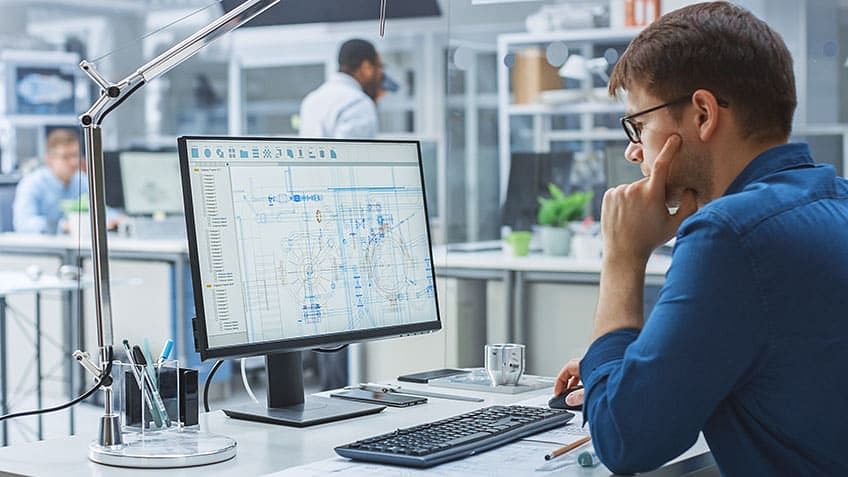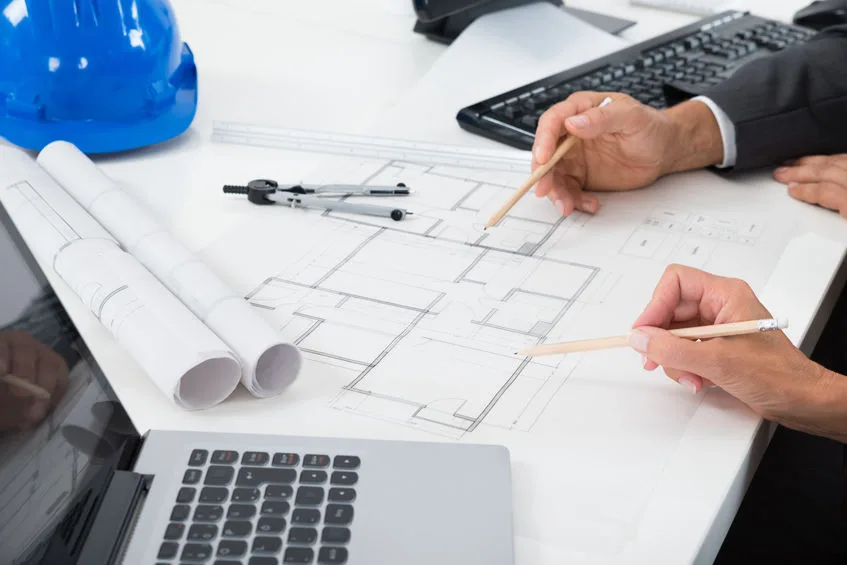Architect Portfolio Samples That Win Over Clients Instantly
Architect Portfolio Samples That Win Over Clients Instantly
Blog Article
The Role of Sustainability and Modern Technology in Modern Architect Practices
Sustainability and modern technology are reshaping modern style in methods you could not expect. By embracing smart advancements and eco-friendly products, designers are not just developing buildings; they're crafting settings that improve our lifestyle. This change isn't almost visual appeals or functionality; it's concerning developing an accountable strategy to our planet's future. What's driving this improvement, and exactly how can these adjustments impact your area?
The Relevance of Sustainable Style
Lasting architecture is necessary not simply for the atmosphere yet additionally for boosting our top quality of life. When you welcome sustainable design, you're not simply lowering your carbon impact; you're developing rooms that advertise health and health.
Additionally, sustainable architecture often leads to stronger communities. When structures are created with environment-friendly practices, they can motivate others to do the same, cultivating a culture of sustainability. You'll discover enhanced building worths and a higher sense of pride in your environments.
Finally, by prioritizing sustainability, you're buying the future. You're making certain that future generations delight in a much healthier world and vivid neighborhoods. So, when you consider your next job, think of exactly how sustainable design can boost your life and those around you.
Cutting-edge Products Transforming Structure Practices
As you explore ingenious materials in design, you'll find that eco-friendly building products are reshaping just how we think of sustainability. Recycled material innovations are offering new life to waste, while wise material innovations enhance developing efficiency. These improvements not just promote eco-friendliness however additionally press the boundaries of design.
Naturally Degradable Construction Materials
While traditional construction materials usually add to environmental degradation, eco-friendly building products are arising as a feasible option that transforms building techniques. By including naturally degradable options into your layouts, you're not simply improving aesthetic appeal; you're also making a favorable effect on the world. As you adapt to these cutting-edge products, you'll find that they offer resilience and versatility, enabling you to create frameworks that line up with modern worths of sustainability and duty.
Recycled Material Developments
Recently, cutting-edge products with high recycled material have transformed building techniques, using architects amazing new alternatives - Architect. You can now incorporate products like recycled steel, which not only reduces waste yet likewise boasts impressive toughness. Recycled glass is one more wonderful choice, giving aesthetic allure while lessening environmental influence

Smart Product Technologies
Smart product innovations are reshaping the way you believe regarding developing methods, using dynamic options that adapt to changing problems. These cutting-edge products, such as self-healing concrete and thermochromic glass, enhance building efficiency and sustainability. By incorporating clever materials, you can create energy-efficient layouts that react to their environment, lowering total power consumption.
The Integration of Smart Technologies in Layout
As modern technology develops, integrating clever options into architectural layout ends up being important for creating effective and sustainable spaces. You can include smart innovations like developing administration systems, which maximize energy usage and improve resident comfort. Sensing units can monitor ecological problems, changing lights and temperature instantly based on real-time information. This adaptability not only enhances user experience however also minimizes energy usage.
Incorporating Web of Points (IoT) devices enables smooth interaction among different structure systems, allowing you to make data-driven choices that enhance performance. Smart products that react to environmental modifications can better enhance your design, supplying vibrant remedies to ever-changing conditions.
Energy Efficiency and Renewable Resource Solutions
While lots of engineers concentrate on looks, focusing on power performance and renewable energy solutions is vital for lasting style. You can begin by including easy solar design, which optimizes all-natural light and warmth, reducing reliance on artificial lighting and heating unit. Utilize high-performance insulation and energy-efficient windows to minimize power loss.
Don't ignore eco-friendly power systems-- set up solar panels or wind turbines to create tidy power on-site. You can likewise think about integrating geothermal heating and cooling systems for an extra lasting temperature level law.
By picking energy-efficient devices and illumination, you'll not only decrease power intake however likewise lower operational prices for developing residents.
Incorporating these principles right into your layouts not only benefits the setting however also boosts the structure's appeal and worth. Ultimately, your dedication to power performance and renewable power will set your jobs apart in a competitive market.
Water Preservation Strategies in Modern Architecture
Incorporating water preservation approaches into modern-day architecture is important for producing sustainable buildings that minimize ecological impact. You can attain this by integrating rain harvesting systems, which web keep and gather rain for watering and non-potable usages. Applying low-flow fixtures and clever irrigation systems also lowers water usage, making sure effective usage throughout the building.
Take into consideration using drought-resistant landscaping, which needs less water and promotes biodiversity. Incorporating permeable paving materials permits rain to infiltrate the ground, decreasing overflow and recharging groundwater materials.
Additionally, setting up greywater recycling systems can repurpose water from sinks and showers for commode flushing or irrigation, further saving sources.
The Influence of Biophilic Layout on Well-Being
Biophilic design brings nature inside your home, and you'll observe its favorable results on your health and happiness. By enhancing indoor air high quality and linking you with natural environments, these rooms can change your day-to-day experience. Let's explore how integrating these features can increase your general wellness.
Nature's Influence on Health and wellness
Exactly how does our atmosphere shape our wellness? It can substantially boost your mental and physical health when you include components of nature right into your surroundings. Biophilic style, which emphasizes natural light, plants, and natural materials, fosters a sense of link to the outdoors. This link can minimize tension, boost state of mind, and boost cognitive feature. You might find that rooms loaded with plant urge imagination and efficiency, making your everyday tasks really feel extra delightful. Furthermore, natural environments can assist you feel extra kicked back and focused, advertising total health. By focusing on nature in your environment, you're not simply enhancing your space; you're additionally nurturing your health and joy. Embracing biophilic layout is a step towards a much healthier lifestyle.
Enhancing Indoor Air Top Quality
While numerous individuals concentrate on visual appeals and capability in design, improving interior air quality plays an essential function in your total well-being. Poor air high quality can bring about health problems like frustrations, fatigue, and breathing troubles. By incorporating biophilic style components, you can boost air quality naturally. Plants, for example, not just beautify your space yet likewise filter toxins and boost oxygen levels. Using products with low unpredictable organic compounds (VOCs) additionally adds to a healthier interior setting. In addition, optimizing all-natural air flow helps in reducing indoor contaminants. Prioritizing these elements in your style will certainly go to this site not just boost your room yet additionally advertise a sense of calm and wellness. Eventually, a focus on air high quality is crucial for a healthy and balanced and lasting living setting.
Connection With All-natural Aspects
When you attach with natural components in your space, you not only boost its aesthetic allure but likewise substantially increase your health. Biophilic design motivates you to integrate features like plants, all-natural light, and natural materials. These elements produce a relaxing environment, reducing anxiety and anxiety.
Future Trends in Sustainable Building Practices
As the world faces pressing ecological obstacles, engineers are increasingly embracing ingenious techniques to sustainability that redefine just how we layout and construct. You'll see a surge in biophilic style, incorporating nature right into urban spaces to enhance wellness and lower power consumption. Smart modern technologies, like AI and IoT, are streamlining energy administration in structures, optimizing resource use, and lessening waste.
In addition, modular construction is acquiring traction, enabling faster, much more efficient building procedures while lowering ecological influence. Making use of sustainable materials, such as reclaimed wood and recycled steels, is coming to be standard technique. As you discover these fads, expect a shift toward click reference round layout, highlighting the lifecycle of materials and promoting reuse and recycling.
These forward-thinking strategies not just address eco-friendly problems however likewise create much healthier, a lot more durable communities. By remaining educated regarding these trends, you can aid form a sustainable future in architecture.
Regularly Asked Inquiries
Exactly How Can Sustainability Affect Project Prices and Spending Plans?
Sustainability can substantially affect project prices and budgets. You could discover that initial financial investments in green products or technologies bring about long-lasting savings via energy efficiency, minimized waste, and potential federal government rewards, inevitably balancing the total expenses.
What Qualifications Exist for Sustainable Style?
You'll discover numerous accreditations for lasting architecture, consisting of LEED, BREEAM, and the Living Building Difficulty. These qualifications help you show your commitment to sustainability and can improve your task's reputation and interest customers.
How Does Regional Society Influence Sustainable Layout?
Neighborhood culture forms lasting style by showing community materials, values, and practices. You'll discover that incorporating local visual appeals and methods not only respects heritage yet likewise boosts the performance and acceptance of your building projects.
What Duty Does Client Education Play in Sustainable Practices?
Customer education and learning's vital for promoting lasting practices. When you educate clients regarding advantages, prices, and environmental effects, you encourage them to make enlightened choices, cultivating a joint approach that enhances the project's overall sustainability.

Just How Can Architects Measure the Success of Sustainability Efforts?
You can gauge the success of sustainability initiatives by tracking power usage, reviewing material effectiveness, and gathering responses from clients. Routine audits and comparisons against criteria will certainly aid you improve your approaches and display renovations efficiently.
By integrating wise products, you can develop energy-efficient designs that respond to their environment, lowering general power intake.While many architects focus on aesthetics, prioritizing energy efficiency and renewable energy solutions is important for sustainable design. Biophilic design, which emphasizes natural light, plants, and natural products, cultivates a feeling of link to the outdoors. Biophilic style motivates you to incorporate features like plants, natural light, and natural products. As you check out these patterns, expect a shift toward round layout, highlighting the lifecycle of materials and promoting reuse and recycling.
Report this page